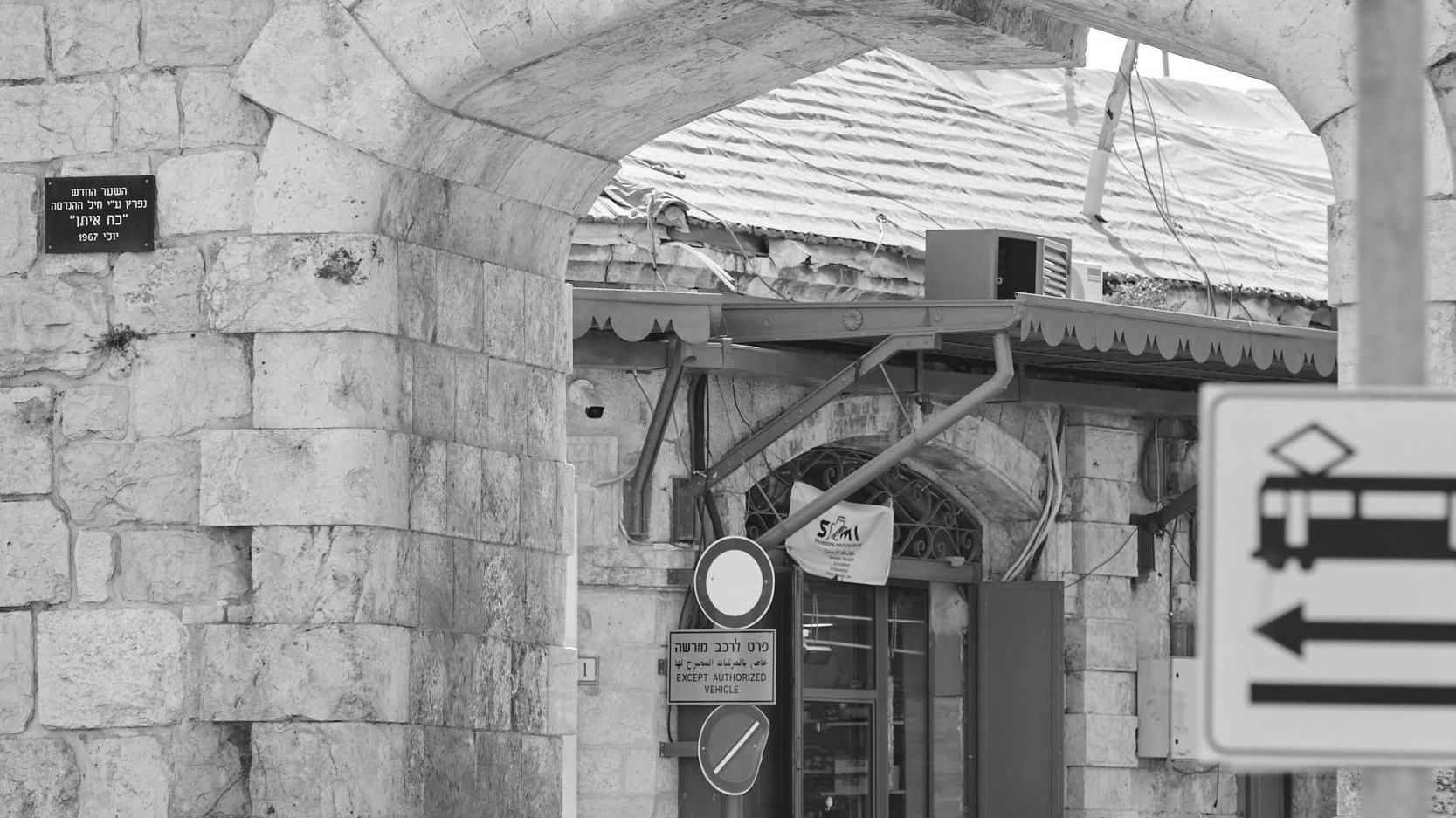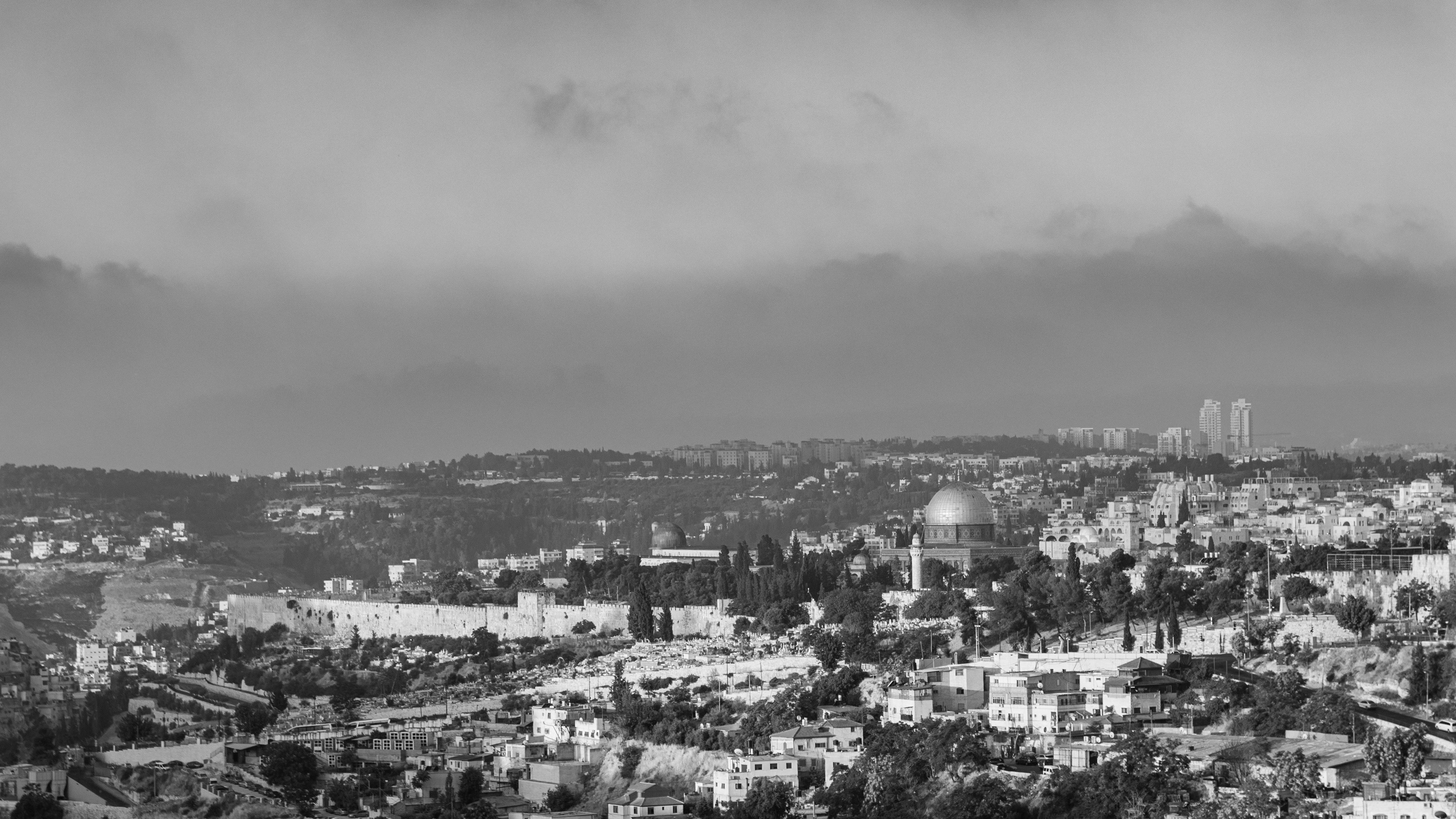One of the first things, which you see when entering the Haram al-Sharif, is the golden dome of the Dome of the Rock. It doesn’t matter where you enter from, making this structure so dominant, even compared to the Aqsa Mosque. For tourists this isn’t obvious, but if you enter from one of the other gates, you will understand the significance of this golden marvel. Even compared to the Aqsa Mosque, which is said to be the place where the Prophet – the one person of reverence for all Muslims all over the world, Muhammad of course, peace be upon him as the tradition demands it mentioned after his name, led the prayer of all of the prophets after descending from the heavens during his night journey from Mecca to Jerusalem, al-Isrâ’.
The Eastern Arch Entrance
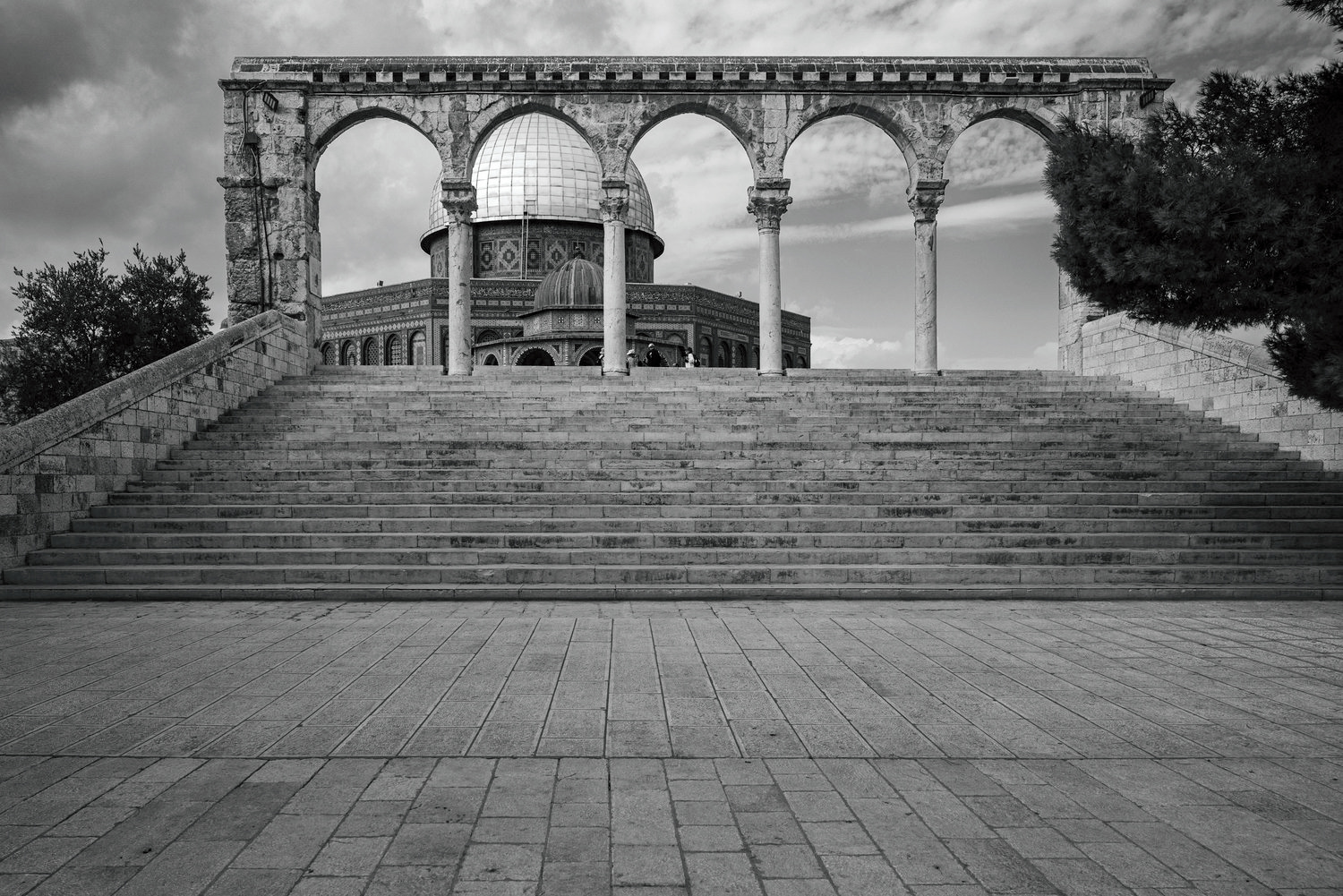
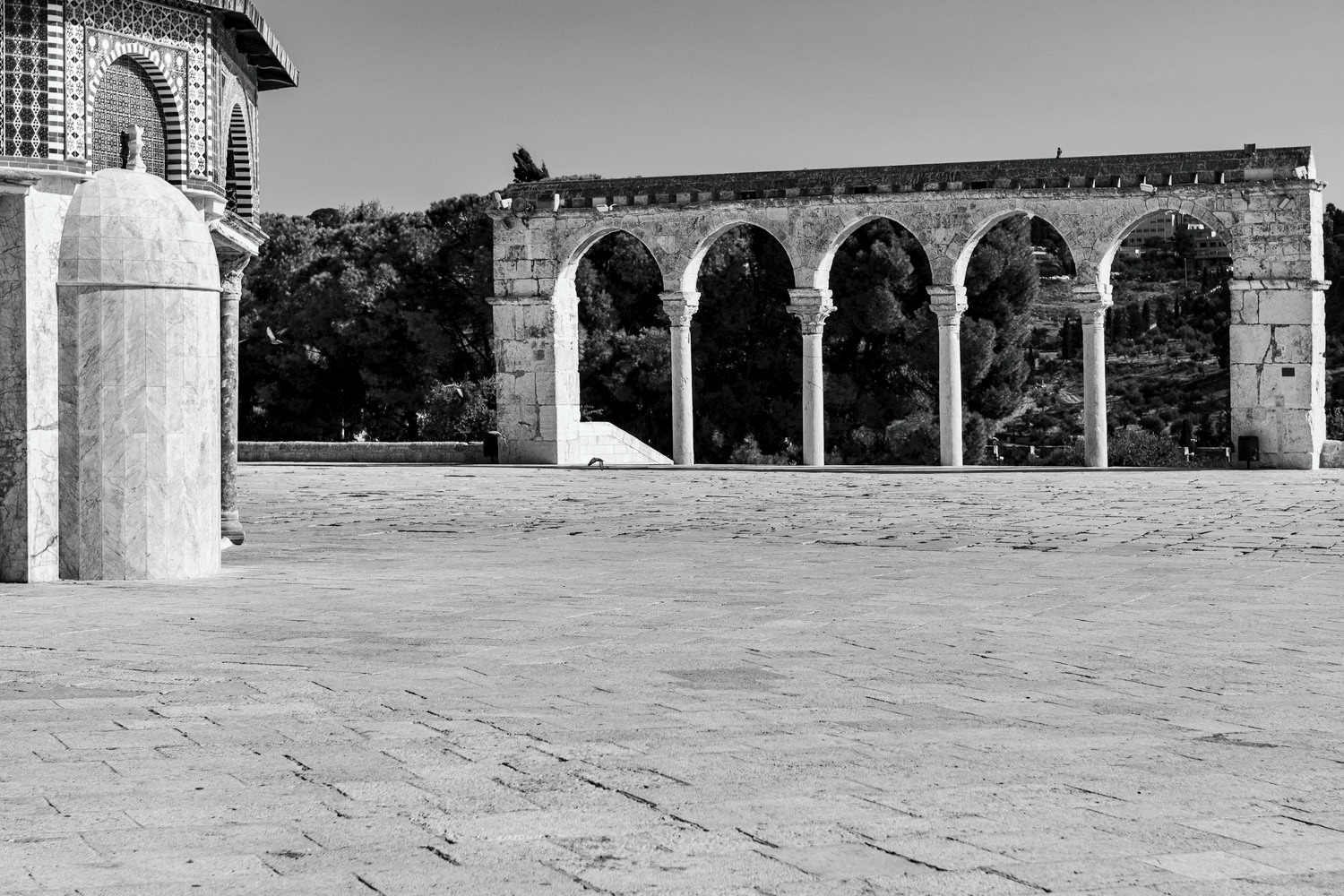
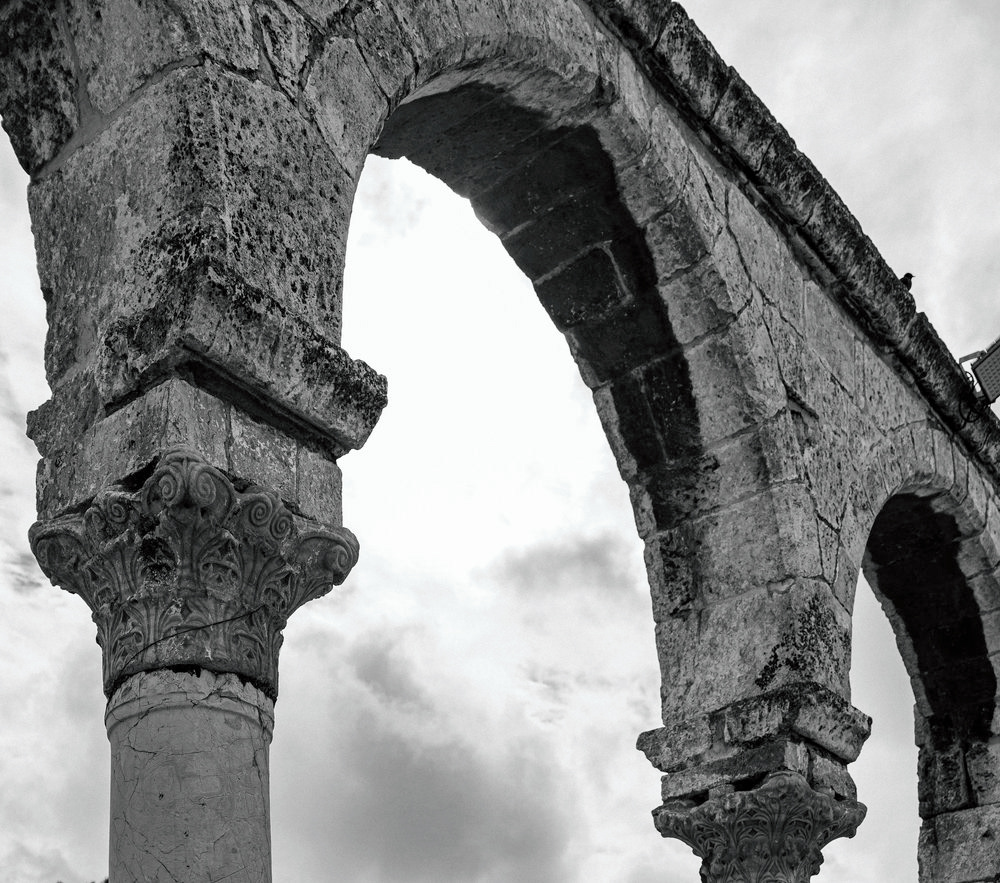

Of course, the Dome of the Rock refers to the rock, from which he stepped up to the heavens, when he arrived, so there should be no wonder that this structure is so essential to this noble sanctuary, even to the point that it takes an elevated status to the Aqsa Mosque – both physically and symbolic, not to talk about the rest of the holy city. Even after having entered the gates to the sanctuary there are still other essential entrances to enter, eight of them to be precise – though the number has changed over the years – in order to access the plateau of the Dome of the rock.
The North Eastern Arch Entrance



The Northern Arch Entrance
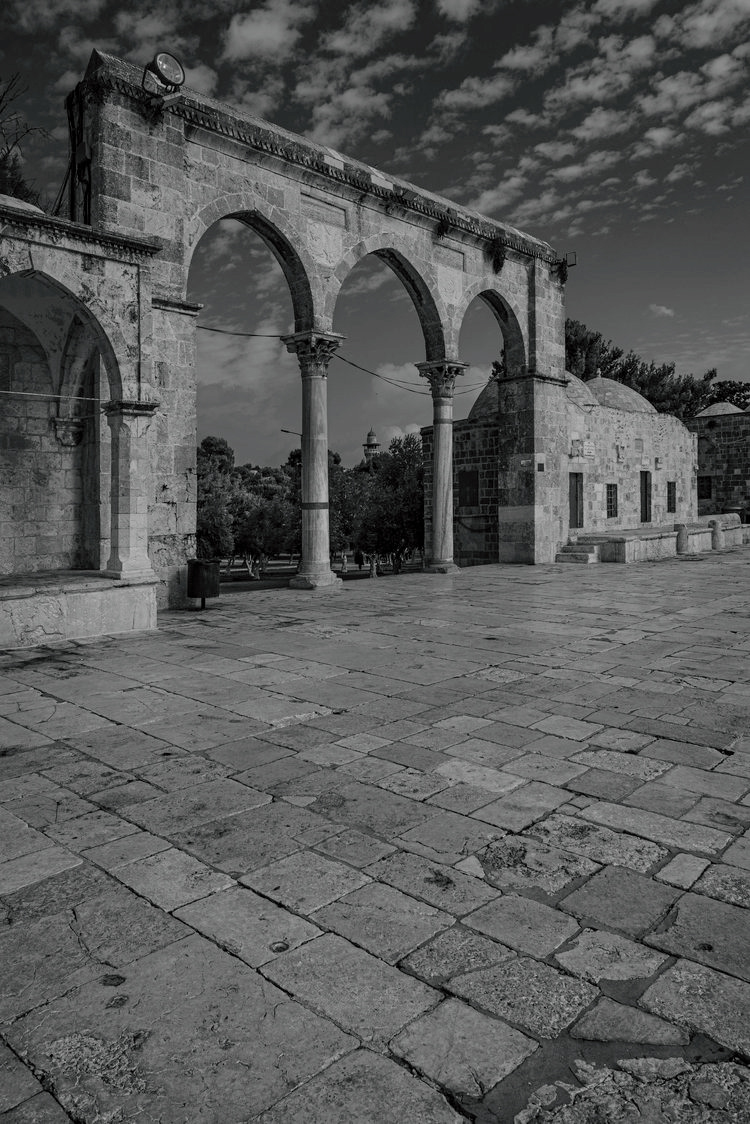
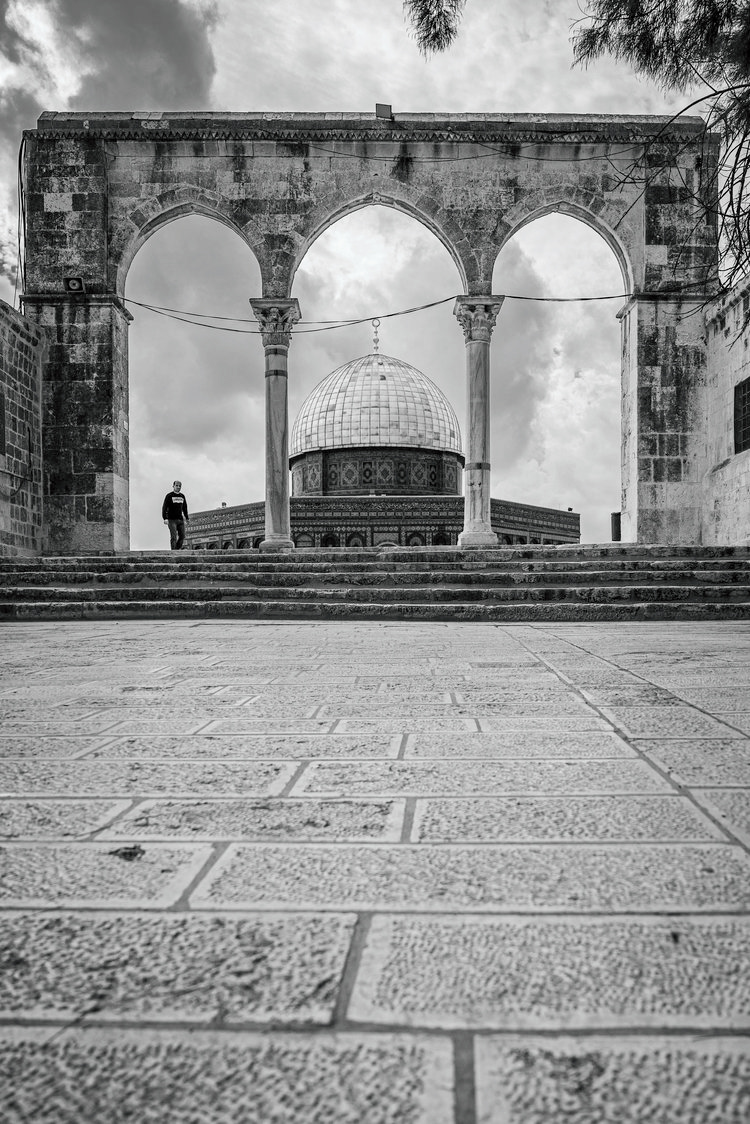
These entrances, or stairways, al-Mawazin as they are known in Arabic, lead up from the general elevation of the sanctuary to the plateau built specially for the Dome of the Rock, not only making it being separated but also elevated from the sanctuary. Going up on the stairways leads one to the arch-entrances which surround the plateau, three of them on the western side, two on the northern side, two on the southern side, and one to the east. Four of the entrances are placed cardinally, forming a clear East-West, North-South connection, whereas the four others are more sporadic placed, though the eastern of the northern arch-entrances form the qibla – the prayer direction – of the whole sanctuary, when aligned with the Bab al-Hittah, the Gate of Absolution, one of the northern gates to the sanctuary, as well as the Dome of the Chain, leading down through the Aqsa Mosque towards Mecca.
The North Eastern Arch Entrance


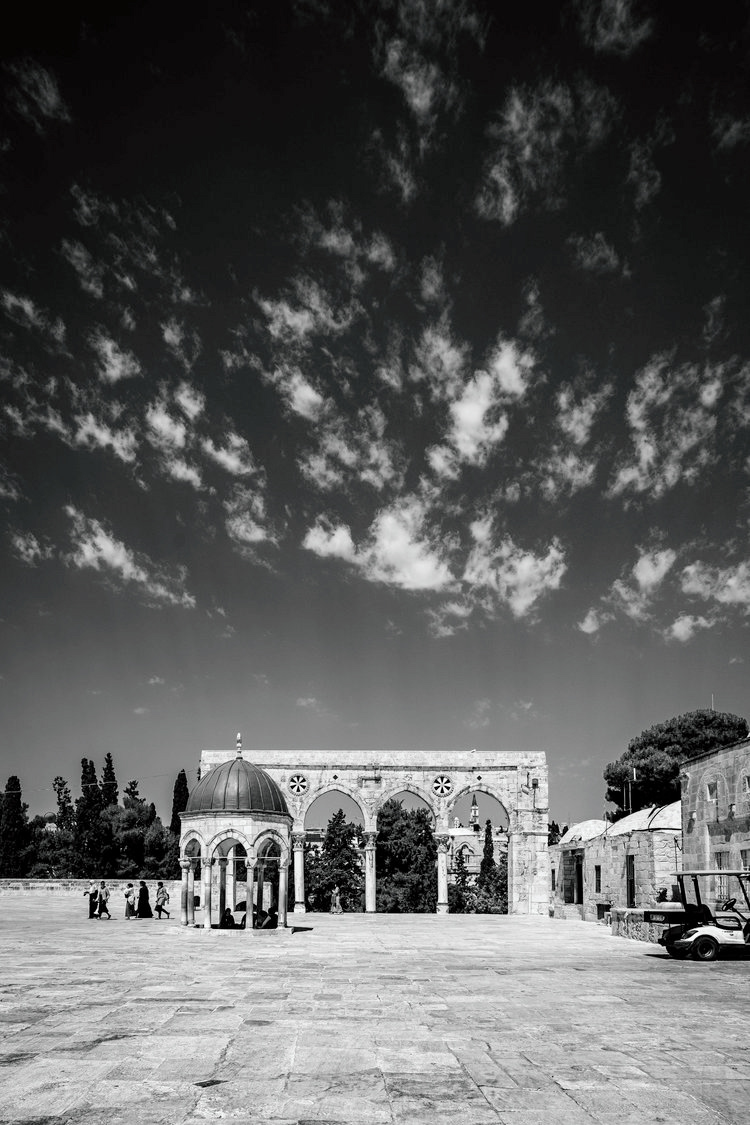
The Western Arch Entrance
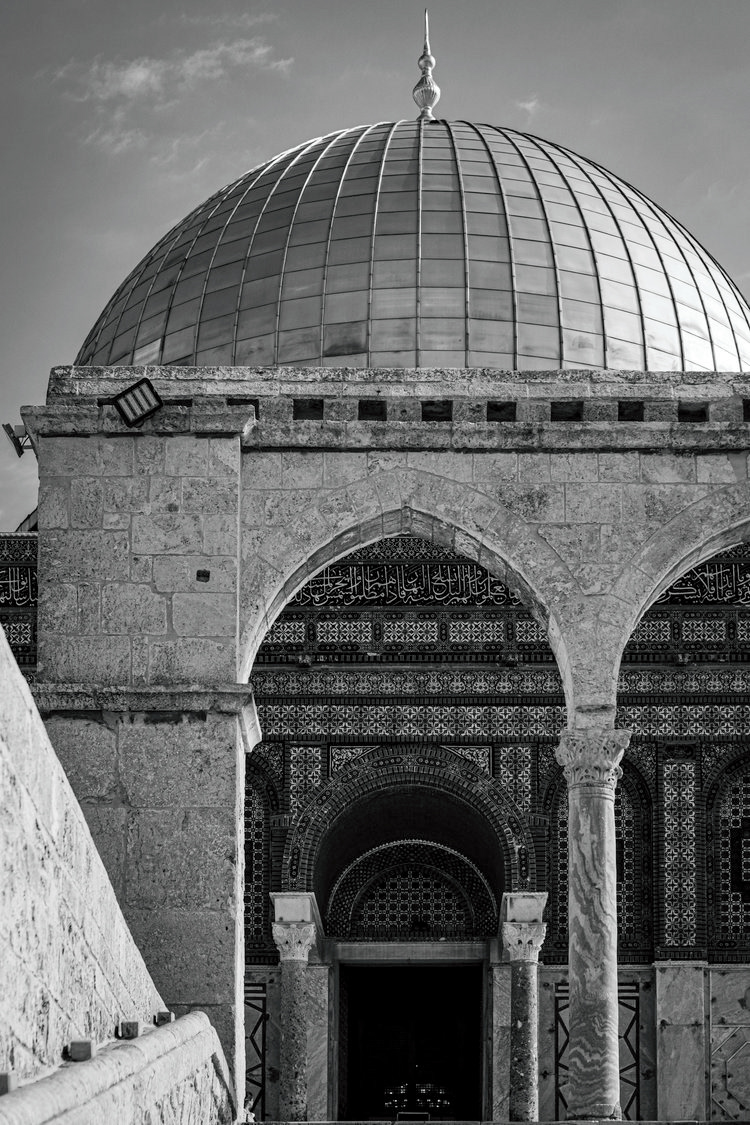

One would not be particularly surprised by their arrangement, considering that most visitors would enter from the western gates, as well as from the north and south, and only few would circle around and walk up to the plateau from the east. But, though never mentioned, there might be more to their placement than merely convenience. There is the before mentioned qibla, and there are the four cardinal stairways of the four corners of the world, which not only gives sense from a aesthetic design choice, but also reflects the tradition ascribed to Ibrahim, having four entrances in his tent, making it a welcoming place for any visitor coming in peace, no matter which direction they come from – something also reflected in the Dome of the Rock itself.
The South Western Arch Entrance

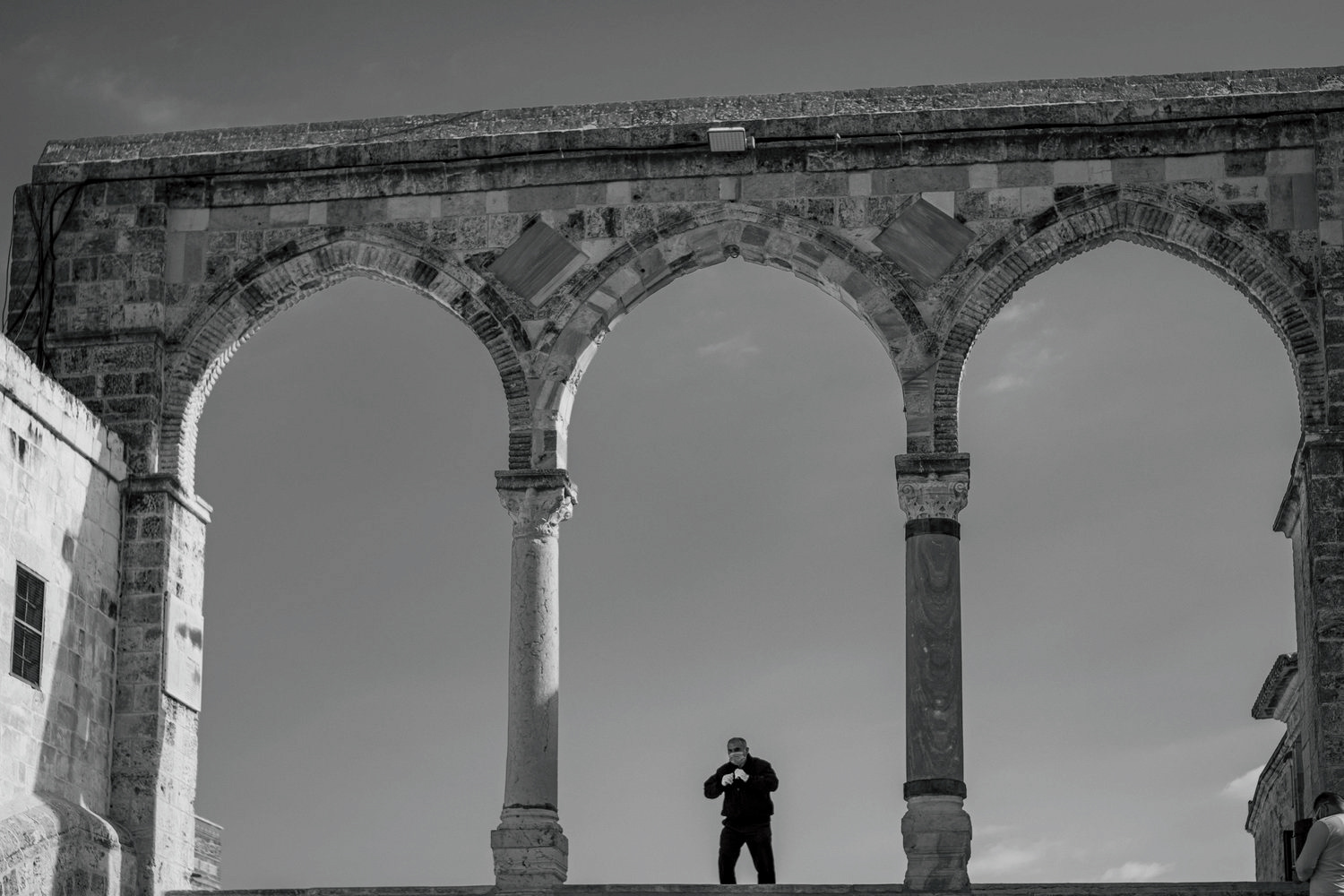
But what of the last three arches? Unfortunately it isn’t clear and I’m not familiar with any tradition mentioning them. They might be made purely based on the convenience they seem to reflect in where they are placed. Nevertheless, they act in line with and fulfill the significance of the other arches, even if there is nothing more to them than mere arch entrances to the plateau. What is clear is that these arches have guarded over the stairways leading up to the Dome of the Rock plateau, witnessing millions of devoted Muslims passing through them (as well as curious non-Muslims) through centuries, during the 1400 years of Islamic Jerusalem, and even to this day they are a sign telling us that we are entering a site of significance, a place elevated from the rest of the city – and maybe even from the world.
The Southern Arch Entrance


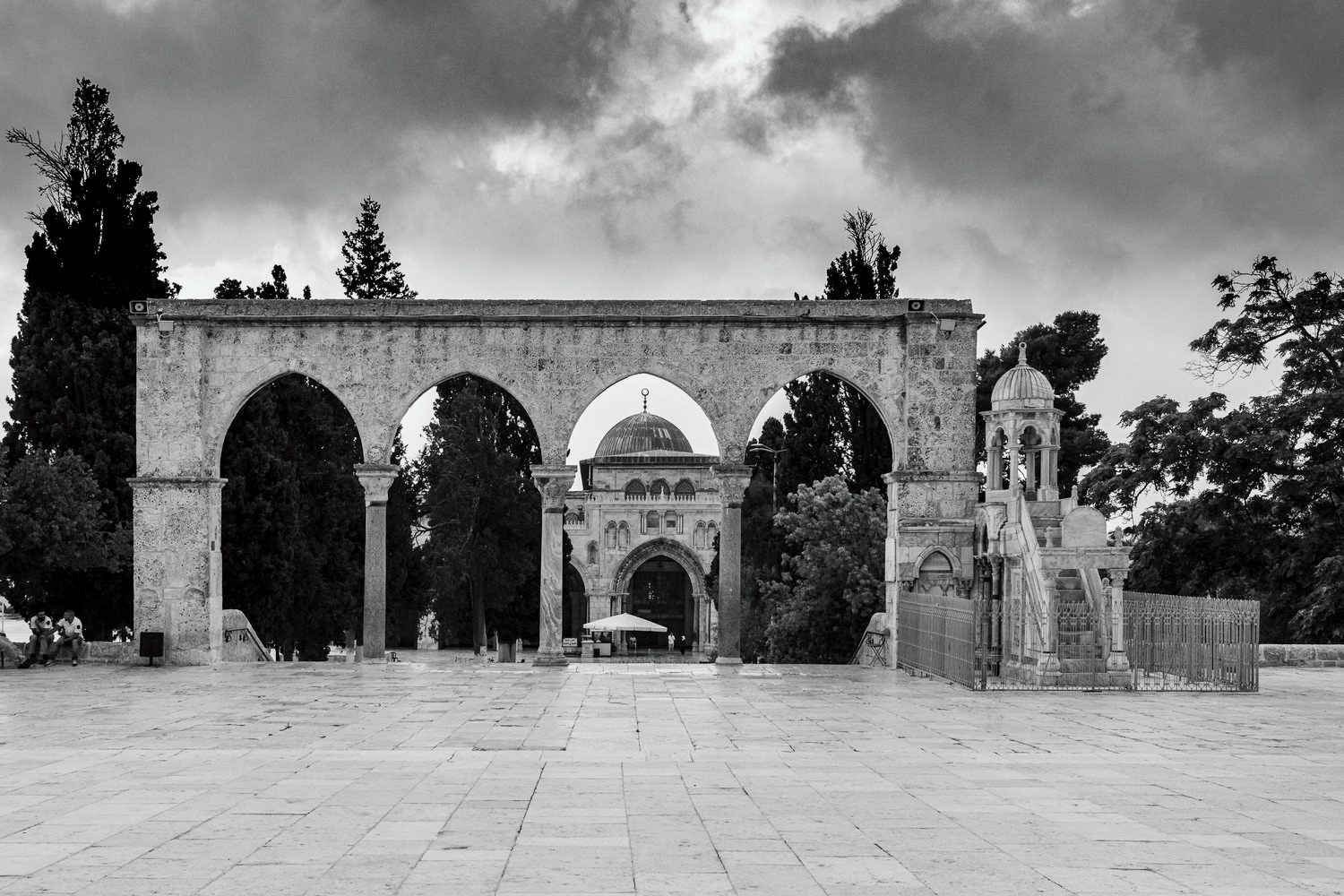
Considering that not much is known about these Mawazin, and that they haven’t even been given names, they carry a tremendous importance, both architectural and symbolic, signifying a separation from the holy to the more holy, a stepping up towards the heavenly for whoever enters through them.
South Eastern Arch Entrance
